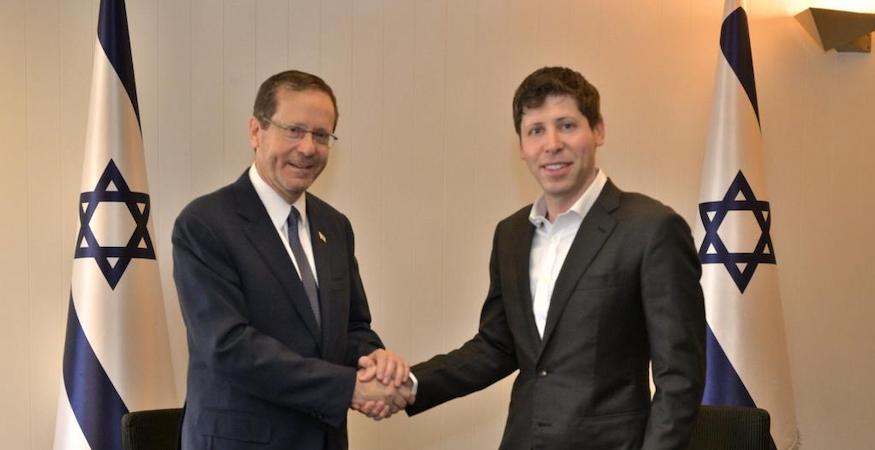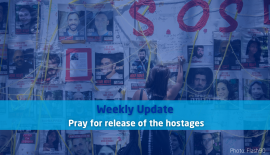The Enigma of Tikkun Olam
Like other Jewish words and phrases such as “hutzpah” or “mazal tov,” Tikkun Olam is also a term which is known by Jews and non-Jews alike. Loosely translated as “repairing the world,” it has even been used by the likes of former President Obama and Hilary Clinton to win over potential American Jewish voters. But it’s not just the rich and powerful who invoke Jewish sayings. Tikkun Olam is used widely today by often well-meaning people who see it as their mission in life to advocate for social justice. Some of this advocacy though is not well-meaning. In some cases, these folk have taken Tikkun Olam as a slogan to “contest the evils of apartheid Israel.” The irony of this rich ancient Hebrew concept which has never had anything to do with politics, now being used to spread lies about Israel, should not go amiss.
“The real meaning of Tikkun Olam is complex and easily misunderstood”
The real meaning of Tikkun Olam is complex and easily misunderstood. The origins of this ancient concept, is not a “one-and-for-all” that can be copy pasted wherever one wishes, rather, it is something which has developed and expanded over hundreds of years.
The first literary mention of Tikkun Olam is found in the Mishnah, that massive collection of ancient Jewish texts, redacted by the Jewish Judah HaNasi for the global Jewish community living around the third century. In this context, the phrase Tikkun Olam is best translated as “in the interest of public policy.” It is mentioned in a passage which relates to social issues which ensure extra protection for the disadvantaged. Thus, Tikkun Olam in the days of the Mishnah was to enable fair conditions concerning the likes of divorce agreements and the freeing of slaves.
Hundreds of years later, the community idea of Tikkun Olam evolved in to one for the individual. This concept was born out of suffering. When the Jewish people were expelled from Spain in the 15th century following the terrible persecutions of their Christian overlords, some of the Jews settled in Safed to join other Jewish people who had moved there before. Today Safed is a quiet and “magical” city perched on top of a Galilee mountain, and famous for her cobbled streets, historic synagogues, colourful artwork and great mountain air. But more than anything, Safed is famous for the Kabbalah, and it was the teachings of the Safed rabbis who became known as the Kabbalists which not only put Safed on the map but ensured its place as one of the four holy cities of Judaism.
Great suffering leads most people to question the meaning of life and the Kabbalist’s were no different. Out of loss and torment, was a desire to hold on to their faith in God who has our good in mind. Inasmuch as they began to develop mystical ideas of suffering and healing which became known as Tikkun Olam.
In their understanding, Tikkun Olam referred to a mystical account of the beginnings of the world where God reduced Himself in order to make room for his creation. In the most simplistic of explanations, while most of the light returned to God, some attached itself to broken vessels. The Kabbalists said these broken shards were evil, and also the basis for the material world. For the Kabbalists, it was humanity’s task to restore this divine light. Mankind was to repair the trapped sparks through religious and holy acts.
Rabbi Isaac ben Solomon Luria Ashkenazi, or “Ha’Ari” as he is known for short, is considered the father of this Jewish mysticism. Revered and respected by many who heard his teachings, he was considered a child prodigy at the age of eight. In Israel, the fame of the Jerusalem-born rabbi is also due to the two synagogues in Safed named after him. Both synagogues are famous for their roles during the 1948 War of Independence and the Arab siege of Safed. In one of these buildings, Jewish defenders of the city removed the Torah scrolls and drilled holes in the walls for surveillance and shooting. The synagogue could only be accessed via trenches that originated in the Jewish quarter. It therefore served as an effective and excellent defence against the Arab invaders and thus ensured that the city would remain in Jewish hands. In the other synagogue which was packed with people, a bomb fell in the courtyard and a piece of shrapnel flew into the side of the pulpit. Thankfully, no one was hurt. Many claim even today that it was not just a miracle that there were no casualties, but that it was THE biggest miracle Safed had ever seen. These stories and their miracle flavours account for the many Israeli visitors who flood the city during weekends and Jewish festivals.
“The books about the Kabbalah are considered dangerous in Judaism”
The books about the Kabbalah are considered dangerous in Judaism and only to be read by the few and learned men. But while caution may be the case in the Jewish community, the Kabbalah has attracted famous non-Jews amateurs who cannot read Hebrew, or the original text, yet become proponents for the Jewish mysticism. Practitioners like Madonna, Ashton Kutcher, and even the legendary British soccer player, David Beckham have made the forbidden and dangerous, popular and accessible.
Through the Kabbalists, Tikkun Olam became an individual concept rather than a collective one as found in the Mishnah. In the modern era, Tikkun Olam was broadened again. As early as the 1950’s it began to refer to social action. Subsequent decades saw many Jewish charities and organisations using the term to refer to their programs. Although the Kabbalistic idea remained of individual responsibility to “repair the world” through acts of goodness, through charities and social initiatives, Tikkun Olam became associated with the community and the individuals who looked to improve public policy for the socially disadvantaged. Thus over 1800 years, Tikkun Olam turned from a community policy into an individual approach and finally a mixture of both. Ever since, its meaning has become convoluted so much so that there is even a standing joke in Israel which says’ “how do you say Tikkun Olam” in Hebrew?”
*) Photo: President Herzog meets OpenAI CEO Sam Altman Press Release GPO.





